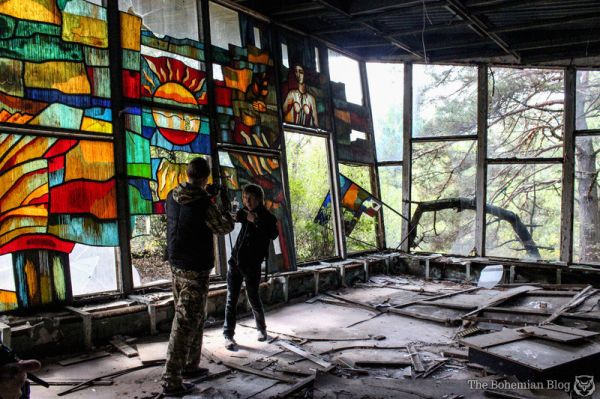Darmon Richter took one of those tours last year, and stayed overnight with thirty people all looking for photographic souvenirs. He observed how the tourists took objects, left trash, damaged buildings, and staged photographs. So even though no one lives there, the Exclusion Zone is far from empty or unchanged. Read more about Chernobyl Tourism and the effect it has at Atlas Obscura.In the case of the Chernobyl Exclusion Zone, this “Soviet time capsule” is observed and interacted with by a growing number of tourists every year. Up until 2011, numerous tour companies were running illicit trips into the wasteland — a study cited by that same Telegraph article suggested that as many as 10,000 tourists were visiting the site each year. Since then, Chernobyl tourism has been met with official government approval. Even previously restricted areas of the Zone are now open to paying guests, including the unfinished Reactors Five and Six. More tourists than ever are visiting the Chernobyl Exclusion Zone, either as a day trip from Kiev, or for longer, overnight stays. This many visitors cannot help but have an impact on their surroundings.
Welcome to ...
The place where the world comes together in honesty and mirth.
Windmills Tilted, Scared Cows Butchered, Lies Skewered on the Lance of Reality ... or something to that effect.
Windmills Tilted, Scared Cows Butchered, Lies Skewered on the Lance of Reality ... or something to that effect.
Saturday, November 15, 2014
Chernobyl Tourism
The
Chernobyl power plant in the former Soviet Union was the site of the
world’s worst nuclear accident in 1986. Almost three decades later, the
abandoned town of Pripyat in Ukraine is a mecca for urban explorers,
despite the fact that it’s still contaminated by radioactivity. We seen
plenty of haunting images
of the empty buildings, as if they were a time capsule that haven’t
changed in 28 years except for the inevitable decay. But those silent
pictures don’t tell the entire story.
Subscribe to:
Post Comments (Atom)


No comments:
Post a Comment